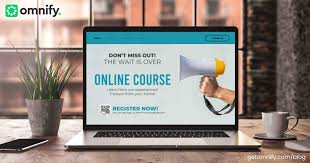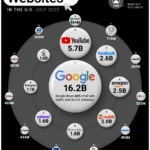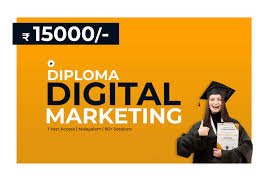You’ve done it. You’ve poured countless hours, your unique expertise, and a piece of your soul into creating a transformative online course. The modules are polished, the videos are edited, and the worksheets are ready. But after the exhilarating “publish” button click, you’re met with… silence. Crickets. An empty student dashboard that stares back at you.
This is the harsh reality for many passionate creators. Building an exceptional course is only half the battle. The other, arguably more challenging half, is marketing. The dream of a thriving online education learning community and a sustainable business can feel distant when you’re stuck at zero.
But what if I told you that enrolling your first 100 students isn’t about luck or having a massive pre-existing audience? It’s about a strategic, repeatable system. It’s about building a bridge between your expertise and the people who desperately need it.
This isn’t just a list of tips. This is a comprehensive blueprint. We will dive deep into ten battle-tested strategies that will take you from zero to your first 100 students and lay the foundation for thousands more. Forget throwing spaghetti at the wall; it’s time to build a marketing engine.
Before You Market: The Non-Negotiable Foundation
Before you spend a single dollar or minute on promotion, you must solidify your foundation. Skipping this step is like trying to build a skyscraper on sand.
Nail Your Niche and Ideal Student Avatar
Who, specifically, is your course for? “Anyone interested in business” is not an answer. “Struggling freelance graphic designers in their first two years who want to land high-ticket corporate clients” is an answer.
You need to know your ideal student better than they know themselves.
- What are their biggest pain points and frustrations?
- What are their deepest desires and aspirations?
- What jargon do they use?
- Where do they hang out online? (Specific forums, subreddits, LinkedIn groups, etc.)
- What online learning platforms have they tried and been disappointed by?
Creating this detailed avatar allows every piece of your marketing—your ad copy, your blog posts, your emails—to speak directly to one person. This is how you cut through the noise. Whether your course is about python learning online or you’re offering AI courses online free as a lead-in, specificity is your greatest asset.
Perfect Your Course’s Value Proposition
Your value proposition is a clear, concise statement that explains the tangible results a student will get from your course. It answers the question: “Why should I spend my time and money on your course instead of the thousands of other free online courses or paid alternatives?”
A weak value proposition: “Learn Spanish with my course.”
A strong value proposition: “Master Conversational Spanish for Your Trip to South America in 8 Weeks, Even if You’ve Never Spoken a Word Before.”
Your value proposition should be front and center on your sales page. It’s the hook that makes a potential student stop scrolling and say, “That’s exactly what I need.”
Strategy 1: The Pre-Launch Buzz: Build an Audience Before You Sell
The single biggest mistake new creators make is building in a vacuum and then trying to find an audience. The smart approach is to build an audience while you build your course.
Start talking about your course topic months before it’s ready. Share your journey, your research, and your “aha!” moments. Create a simple landing page with a title like, “Coming Soon: The Ultimate Course on [Your Topic].”
The key here is to create a high-value lead magnet—a free piece of content that people receive in exchange for their email address. This could be:
- A 10-page PDF guide (e.g., “7 Common Mistakes Beginner Python Programmers Make”).
- A detailed checklist.
- A free 3-day email course.
- Access to a private “waitlist” community.
Your goal is to have a list of 200, 500, or even 1000 highly interested people on your email list before you ever ask for a sale. These are your most likely first students. This is the core principle behind every successful online learning program.
Strategy 2: Content Marketing: Become the Go-To Expert
Content marketing isn’t just about getting traffic; it’s about proving your expertise and building trust at scale. When people see you consistently delivering immense value for free, they can’t help but wonder how amazing your paid content must be.
Blogging for Authority and Traffic
Start a blog focused on your course topic. Write in-depth, 2000+ word articles that answer the burning questions of your ideal student. Think about the entire student journey. If your course is on financial modeling, write articles on “How to Choose the Right Financial Analyst Career Path” or “A Deep Dive into Discounted Cash Flow (DCF) Analysis.”
This is your chance to strategically use keywords your audience is searching for, like “cpa online learning,” “learning spanish online,” or even niche queries like “learning online qld health” if your content is localized. Every blog post is a new doorway for students to find you through Google.
The Power of Video: YouTube and Live Streams
Video is the next best thing to being there in person. Start a YouTube channel and create tutorial-style content.
- Python Course Creator: Create videos on “Setting Up Your First Python Environment” or “Solving a Common Coding Challenge.”
- Language Course Creator: Make videos on “5 Phrases to Sound Like a Native Spanish Speaker” or break down grammar concepts.
- Professional Development Creator: Host live Q&As on LinkedIn about industry trends, relevant to professionals seeking knowledge on platforms like LinkedIn Learning or specialized training like CPA Australia provides.
Video allows people to connect with your teaching style and personality, drastically shortening the sales cycle.
Podcasting for Intimacy
Podcasting creates a uniquely intimate connection. Listeners feel like they have a direct line to you while they’re driving, working out, or doing chores. Interview other experts in your field or do solo “deep dive” episodes on your core topics. This builds authority and introduces you to new audiences.
Strategy 3: Leverage Social Media Authentically
Social media is not just a megaphone to shout “Buy my course!” It’s a place to build community and have real conversations.
Choose Your Platform Wisely
Don’t try to be everywhere. Go where your ideal students are.
- LinkedIn: Essential for B2B, career development, finance (cpa my online learning), and tech courses.
- Instagram/TikTok: Perfect for visual and creative skills (art, design, cooking, fitness) and personality-driven brands.
- Facebook: Powerful for its Groups feature, which allows you to build a dedicated community around your topic.
- Pinterest: A visual search engine, ideal for DIY, home, art, and recipe-related course topics.
Engage, Don’t Just Broadcast
The 80/20 rule applies here: 80% of your content should be pure value (tips, insights, asking questions, sharing behind-the-scenes) and only 20% should be promotional. Respond to every comment. Answer DMs. Show up and be a real human. People buy from people they know, like, and trust.
Utilize Groups and Communities
Find existing Facebook Groups, LinkedIn Groups, and subreddits where your ideal students hang out. Don’t just spam your course link—that will get you banned. Instead, become a valuable member of the community. Answer questions. Share helpful advice. After you’ve established yourself as an expert, you can subtly mention your course when it’s genuinely relevant to a discussion.
Strategy 4: The Early Bird Gets the Worm: Strategic Pricing and Scarcity
Your first launch isn’t about maximizing profit; it’s about gaining momentum and social proof. A powerful way to do this is with a “Founder’s Launch” or “Beta Round.”
Offer your course to your pre-launch waitlist at a significant discount (e.g., 50% off the planned public price). Be transparent:
“You’re getting in on the ground floor. In exchange for this massive discount, I’m asking for your feedback to help make this the best course on the planet.”
This strategy does three things:
- Reduces the Barrier to Entry: A lower price makes it an easier “yes” for early adopters.
- Creates Urgency: Frame it as a one-time offer. “This Founder’s price will never be available again.” Limit the number of spots to, say, 100 students to increase scarcity.
- Generates Priceless Feedback and Testimonials: These first 100 students will give you the feedback to improve your course and the testimonials you’ll use to sell it at full price later.
Strategy 5: Harness the Power of Email Marketing
Your email list is your single most valuable marketing asset. Unlike social media, you own your list. An algorithm change can’t take it away from you. This is the central nervous system of your online learning system.
The Welcome Sequence
When someone joins your list (by downloading your lead magnet), they shouldn’t just get a “thanks for subscribing” email. They should immediately be entered into a 5-7 day automated “Welcome Sequence.” This sequence should:
- Deliver the lead magnet they signed up for.
- Introduce you and your story.
- Provide massive value and quick wins related to your topic.
- Subtly introduce the problem that your paid course solves.
The Launch Sequence
When you’re ready to open enrollment for your course, you’ll create a dedicated “Launch Sequence” (typically 5-7 emails over a week). This isn’t just a series of “buy now” emails. It’s a masterclass in storytelling and persuasion. A typical launch sequence includes:
- Email 1: The Big Announcement: Announce that enrollment is open and reveal your strong value proposition.
- Email 2: Problem & Agitation: Dive deep into the pain points your course solves.
- Email 3: The Solution: Introduce your course as the clear, structured path to the desired outcome.
- Email 4: Social Proof: Share a testimonial or a case study (even a hypothetical one at first).
- Email 5: FAQ & Objection Handling: Address common questions and concerns (e.g., “I don’t have enough time,” “Is it worth the money?”).
- Email 6 & 7: Urgency & Last Call: Remind them that enrollment is closing and this is their final chance to join.
Source: ConvertKit provides excellent guides on crafting effective email sequences for creators.
Strategy 6: The Webinar Funnel: High-Value Teaching Sells
A webinar is one of the highest-converting marketing strategies for online courses, especially for those with a price tag over $200. Why? Because it allows you to deliver incredible value, demonstrate your expertise in real-time, build rapport, and handle objections live.
A successful webinar isn’t a 60-minute sales pitch. It’s a 60-minute teaching session with a 15-minute offer at the end. The structure looks like this:
- The Hook (5 mins): Introduce yourself and promise a specific, valuable outcome for attendees.
- The Core Content (45 mins): Teach three powerful secrets or steps related to your course topic. Give away your best information. Don’t hold back. This builds immense trust.
- The Transition (5 mins): Transition from the free teaching to the paid offer. A good transition is: “We’ve covered a lot today, but this is really just the tip of the iceberg. To truly achieve [desired result], you need a complete, step-by-step system…”
- The Pitch (15 mins): Introduce your course, explain the modules, stack the value with bonuses, reveal the price, and present a special webinar-only offer (e.g., a discount or an exclusive bonus).
Promote your free webinar everywhere—to your email list, on social media, and even with paid ads.
Strategy 7: Collaborate and Conquer: Partnerships and Affiliates
You don’t have to build your audience entirely from scratch. You can “borrow” the trust and reach of others by collaborating with creators in adjacent niches.
Find people who serve the same audience but are not direct competitors.
- If you teach web design: Partner with a copywriter or an SEO expert.
- If you teach yoga: Partner with a nutritionist or a meditation coach.
- If you offer courses for a specific professional exam: Partner with a career coach in that industry.
Forms of collaboration include:
- Content Swaps: You write a guest post for their blog, and they write one for yours.
- Joint Webinars: Co-host a webinar, delivering double the value and promoting it to both of your audiences.
- Instagram Live Swaps: Go live together on Instagram to have a conversation and cross-pollinate your followers.
Once you have a proven product, you can set up a formal affiliate program. Offer partners a commission (typically 30-50%) for every student they send your way. This incentivizes them to actively promote your course to their audience.
Strategy 8: Tap into Existing Online Learning Platforms and Marketplaces
While hosting your course on your own website gives you full control and higher profit margins, online learning platforms and marketplaces like Udemy, Skillshare, and even Coursera or edX have a massive advantage: a built-in audience of millions of students actively searching for courses.
Consider creating a smaller, introductory version of your course and publishing it on a platform like Udemy. For example, if your main course is a comprehensive “Zero to Full-Stack Developer” program, you could release a smaller course on Udemy called “Introduction to HTML & CSS.”
Use this smaller course as a lead generator. You can’t directly link to your website, but you can build your brand, prove your expertise, and encourage students to find you on social media or by searching your name. This strategy introduces your teaching to a vast audience, some of whom will seek out your premium offerings. It’s a way to leverage the marketing power of the biggest best online learning platforms.
Strategy 9: Paid Advertising: A Strategic Boost

While you can get your first 100 students without paid ads, they can act as a powerful accelerator once you have a validated offer. Don’t just “boost post.” Be strategic.
Facebook & Instagram Ads
These platforms are powerful for their sophisticated targeting. You can target users based on their interests (e.g., people who follow specific thought leaders in your niche), demographics, and behaviors. The best strategy is to run ads to a proven piece of content, like your high-value webinar or lead magnet, rather than directly to a sales page. Nurture the lead first, then sell.
Google & YouTube Ads
This is intent-based marketing. You can target people who are actively searching for solutions you provide. For example, you can run an ad that appears when someone searches “how to learn python online” or “online courses australia.” YouTube ads are especially effective, as you can place a short ad for your course before a relevant video tutorial on the platform.
LinkedIn Ads
If your course is for a professional audience (e.g., leadership training, software for businesses, CPA online learning), LinkedIn ads can be a goldmine, despite being more expensive. You can target by job title, company size, industry, and skills, ensuring your message reaches the exact decision-makers you want.
Pro-Tip: Start with a small budget (10−10−20 per day). Test your creative, your copy, and your targeting. Find a combination that brings in leads at a profitable cost, then scale up.
Strategy 10: Gather and Showcase Social Proof Relentlessly
Once you get your first few students—even your beta testers—your new top priority is social proof. Social proof is the psychological phenomenon where people assume the actions of others in an attempt to reflect correct behavior. In marketing, it means showing that real people are buying and loving your course.
- Actively Request Testimonials: Don’t wait for students to offer them. As soon as a student has a win, no matter how small, ask if you can share their story.
- Create In-Depth Case Studies: Interview your most successful students. Tell their story: where they were before your course, what their journey through the course was like, and the tangible results they achieved afterward.
- Display Numbers: As soon as you hit milestones, display them. “Join 100+ students,” “Over 500 designers trained.”
- Use Student Photos and Videos: A video testimonial is 10x more powerful than a text one.
Plaster this social proof everywhere: on your sales page, in your emails, in your ads, and on your social media. It’s the single most persuasive element you have.
The Post-Launch Momentum: What Happens After Student 100?
Getting to 100 students is the tipping point. But the work doesn’t stop there. Now, your focus shifts to creating an incredible student experience.
- Build a Community: Create a private group for students to connect, ask questions, and support each other.
- Be Present: Host regular live Q&A sessions inside your community.
- Iterate and Improve: Use the feedback from your first 100 students to make your course even better.
A phenomenal student experience leads to more powerful testimonials and word-of-mouth marketing, which creates a flywheel of growth that will carry you to 1,000 students and beyond. You might even consider blended learning models, combining your online modules with live workshops for a premium experience.
Conclusion: Your Journey from 0 to 100 Students Starts Now
Marketing your online course can feel like a monumental task, but it’s not magic. It’s a series of strategic, intentional actions. It begins with deeply understanding your student and building a solid foundation. It gains momentum through consistent content that proves your value. It accelerates through smart launches, collaborations, and targeted advertising. And it’s sustained by the social proof generated from your students’ success.
You don’t need to implement all ten of these strategies at once. Pick one or two that feel most aligned with you and your audience. Start with a pre-launch waitlist. Write your first high-value blog post. Plan your first webinar.
The benefits of online learning are immense, not just for the students, but for creators like you who have valuable knowledge to share. You have the power to build a business that is both profitable and profoundly impactful. The path to your first 100 students is laid out before you. Your journey starts with the first step.












